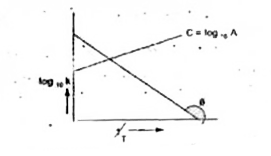The activation energy of a reaction is 9 kcal mole −1 . The increase in the rate cnstant when its temperature is raised from 295 to 300 approximately
A
1.289 times
B
12.89 times
C
0.1289 times
D
0.25
Video Solution
Text Solution
The correct Answer is:A
logK2K1=Ea.DT2.303RT2T1
=9000×52.303×2×300×295=0.1104
logk2k1=0.1104∴K2K1=1.289
∴K2=K1×1.289
|
Topper's Solved these Questions
- CHEMICAL KINETICSBOOK - MARVEL PUBLICATIONCHAPTER - CHEMICAL KINETICSEXERCISE - TEST YOUR GRASP
50 Videos
- BIOMOLECULESBOOK - MARVEL PUBLICATIONCHAPTER - BIOMOLECULESEXERCISE - TEST YOUR GRASP
40 Videos
- CHEMICAL THERMODYNAMICS AND ENERGETICSBOOK - MARVEL PUBLICATIONCHAPTER - CHEMICAL THERMODYNAMICS AND ENERGETICSEXERCISE - MULTIPLE CHOICE QUESTIONS (TEST YOUR GRASP)
50 Videos
Similar Questions
Knowledge Check
The activation energy of a reaction is 9 kcal/mol. The increase in the rate constant when its temperature is raised from 395 to 300K is approximately
A0.1B0.5C1D0.25When the temperature is increased, heat is supplied which increases the kinetic energy of the reacting molecules. This shall increase the number of collisions and ultimately the rate of reaction shall be enhanced. Arrhenius suggested a equation which describes K as a function of temperature, i.e.
k=Ae−Ea/RT
where
k= rate constant
A= a constant (frequency factor)
Ea= energy of activation
log10k=log10A−Ea2.303R[1R]
Y=C+MX
It is the equation of straight line with negative slope. On plotting log10k against [1T] we get a straight line as shown below :

The slope gives activation energy and intercept gives frequency factor.
Also log.k2k1=Ea2.303[T2−T1T1T2]
The activation energy of a reaction is 9 kcal/mol. The increase in rate constant when its temperature is raised from 295 to 300K is approximatelyA10%B50%C100%D255%The activation energy of a reaction is 5 kcal/mol. The increase in the rate constant when its temperature is raised from 300 to 305 K is approximately
A0.146B0.5C1D25.7%.
The activation energy of a reaction is 9.0kcal/mol.
The increase in the rate consatnt when its temperature is increased from 298K to 308K is
View SolutionThe activation energy of a reaction is 9.0kcal/mol.
The increase in the rate consatnt when its temperature is increased from 298K to 308K is
View SolutionThe activation energy for a reaction is 9 kcal/mol. The increase in late (XI 'slant when its temperature is increased from 298K to 308 K is (R=2calK−1mot−1,100.213=1.63)
View SolutionThe activation energy for a reaction when the temperature is raised from 300K to 310K is
View SolutionWhat is the energy of activation of a reaction is its rate doubles when the temperature is raised from 290 K to 300 K ?
View Solution
